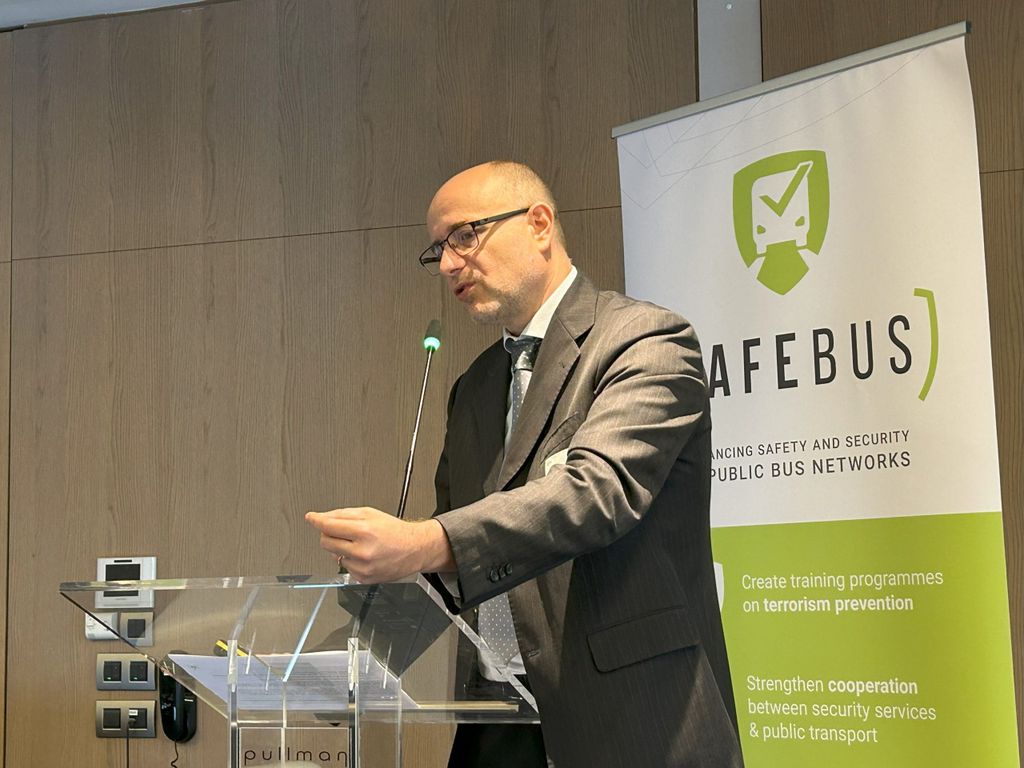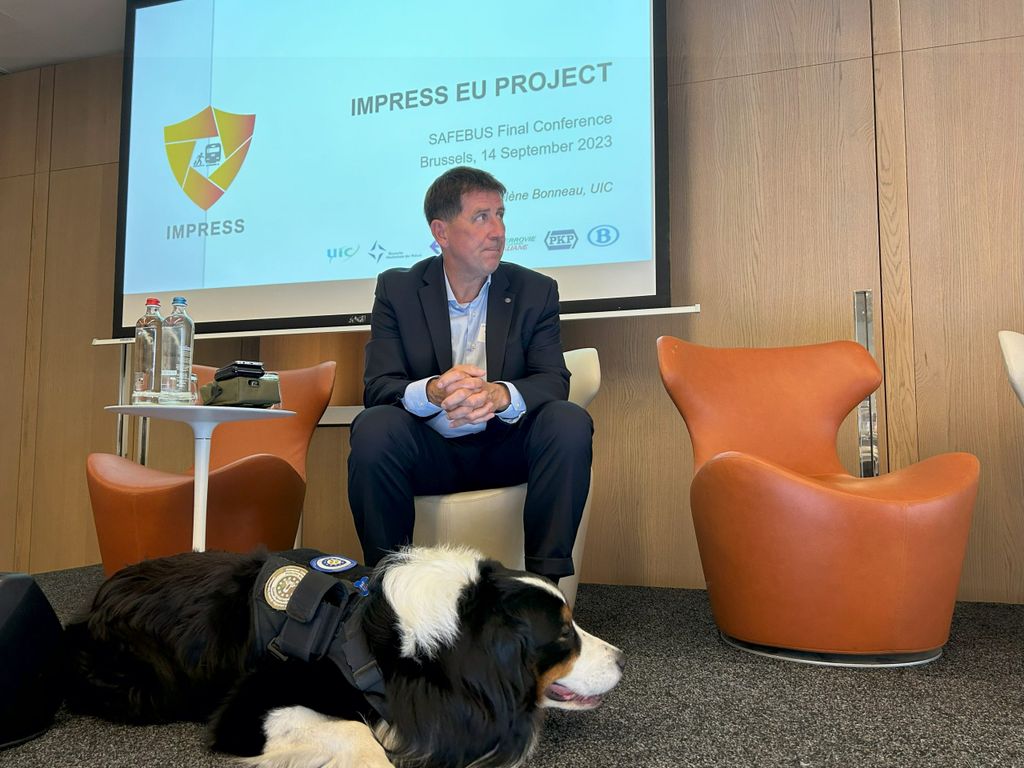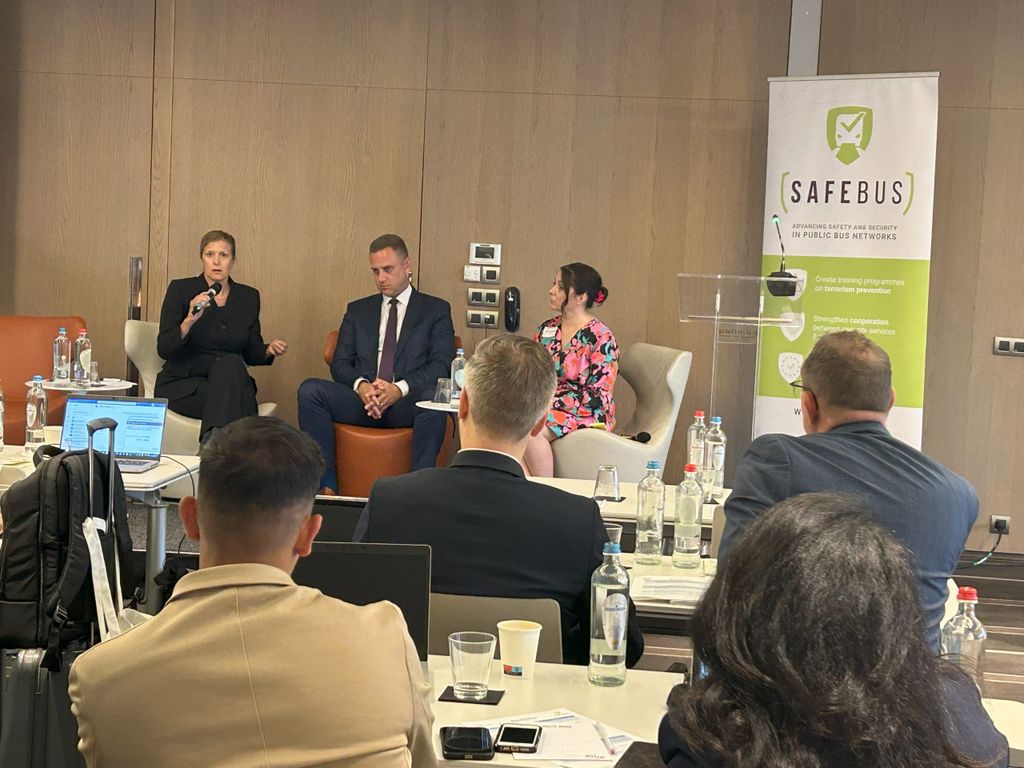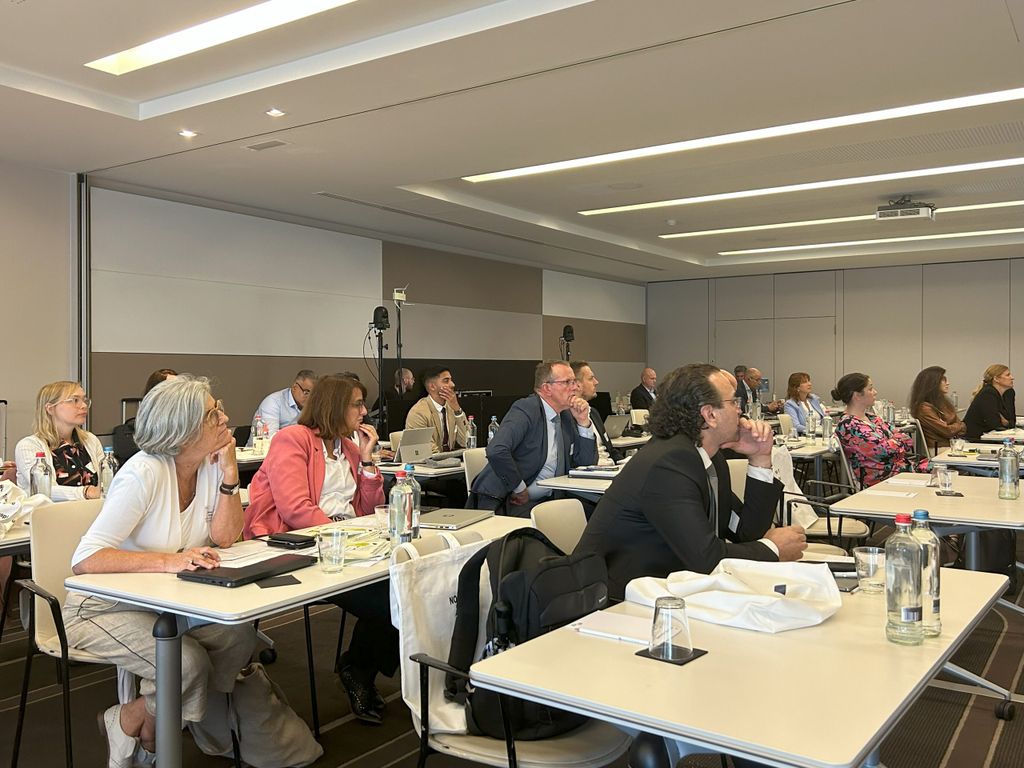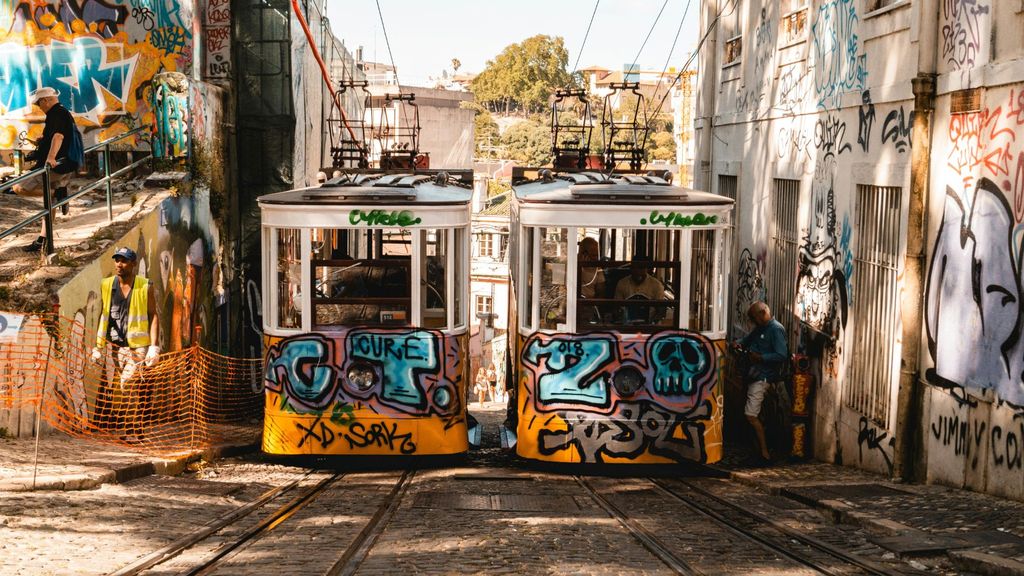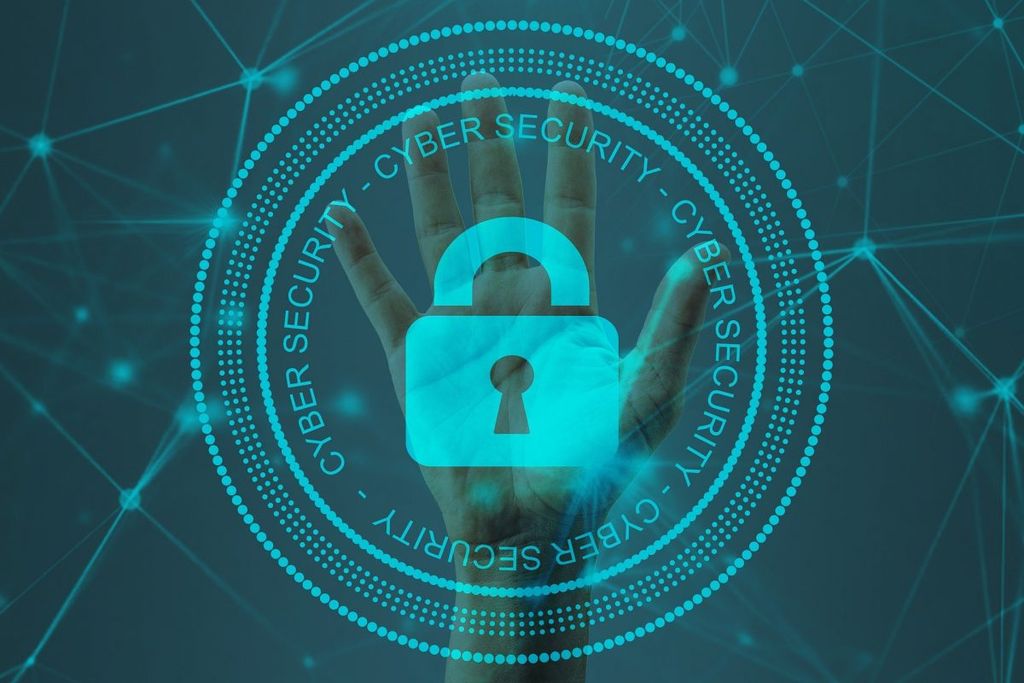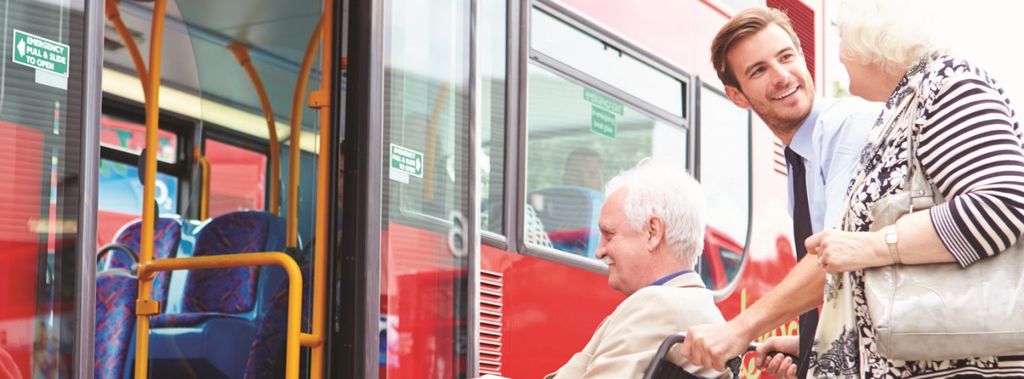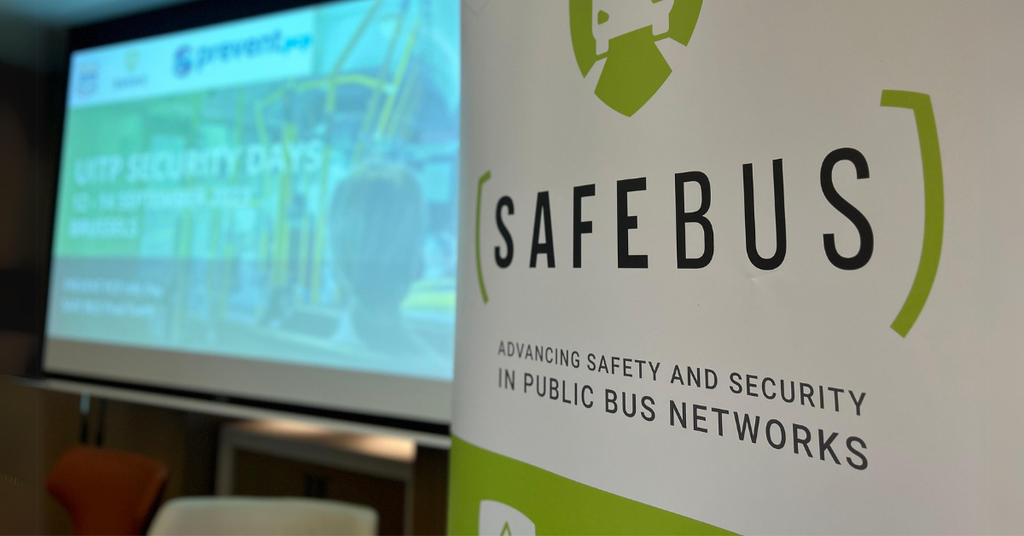
Making bus travel more secure: SAFE BUS event closes UITP Security Days
A “shining example” of a project
After two years of work on how to advance security on public bus networks and prevent terrorism, SAFE BUS held its final event in September 2023. But it is not the end of the story.
The goal of the UITP-led and EU-funded project is to encourage collaboration between public transport operators and both public and private security services. This event only marked the end of the implementation phase. Now, national operators will be equipped by SAFE BUS to build on the project’s results with handbooks and online courses for transport staff.
The impact of EU-funded SAFE BUS was endorsed by the European Commission representatives who opened the day:
“SAFE BUS is a shining example of a project… promoting high added value to the EU with a focus on public transport, in particular buses.”
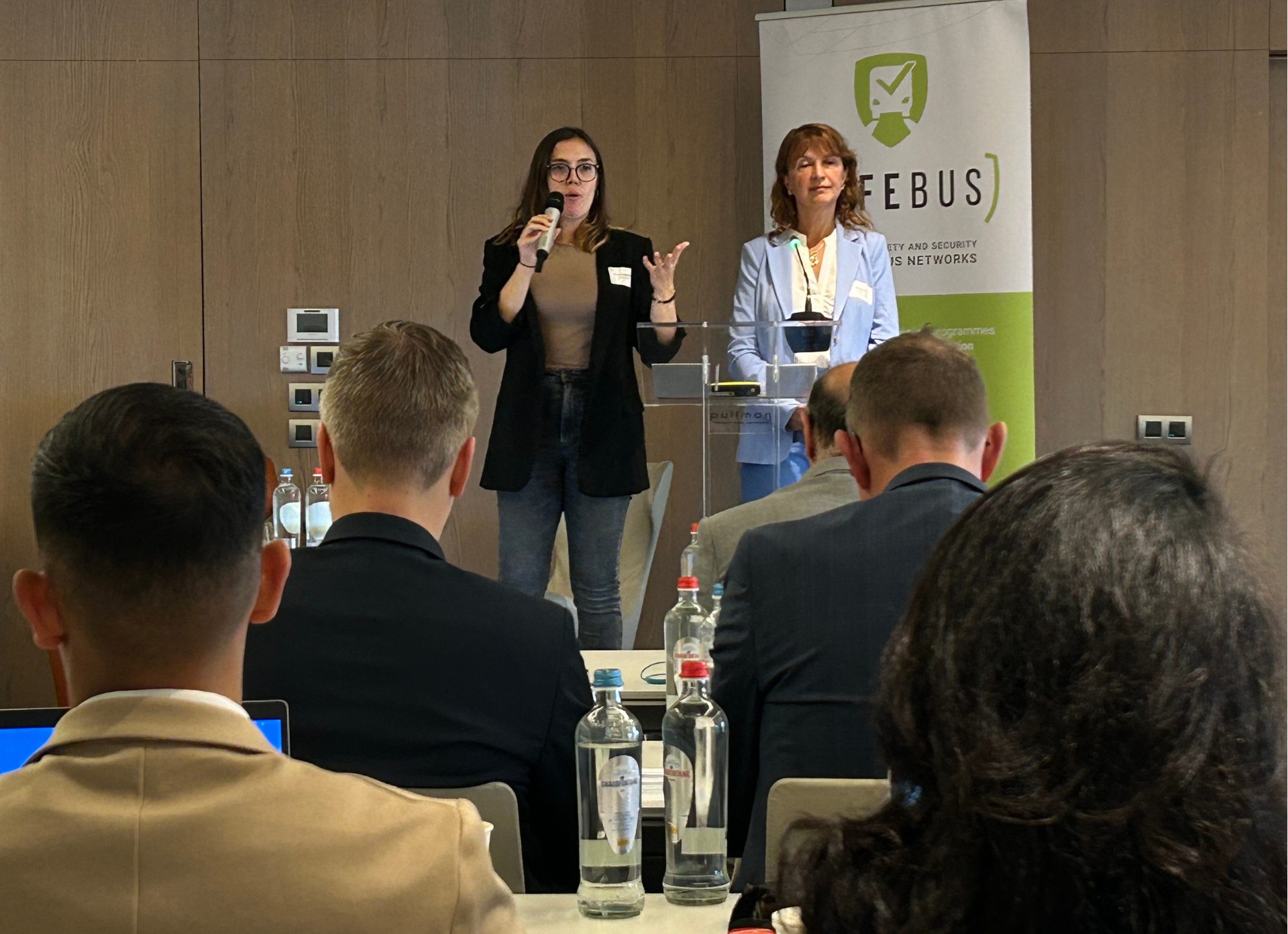
It is undeniable that SAFE BUS generated interest, as the closing showcase was attended by security tech companies, private security consultants, EU officials from DG Home, as well as police and emergency services, and of course, public transport operators (PTO). The PTOs came from across Europe to attend, including delegations from Austria, Belgium, Italy, the Netherlands, Poland, Portugal, and the United Kingdom.
- 24 month project between 2021 and 2023
- 5 key partners in 5 countries
- 2 handbooks
UITP is proud to have coordinated the SAFE BUS project alongside four UITP members: Arriva NL, ZTM Warsaw, CARRIS and ATAC. As an information-driven and internationally oriented project, SAFE BUS also included operators like FlixBus to identify the unique challenges of international travel. After all, security does not stop at the border. “Our aim is to foster cooperation in a fragmented reality”, says UITP’s Safety & Security Manager Carmela Canonico.
The event’s speakers mentioned many challenges to tackling security on public transport:
- Some PTOs think that discussing security could scare passengers
- Authorities in smaller towns feel less targeted and don’t invest
- Widespread staff shortages impacts free time for training
- No law mandates anti-terrorism training for PT staff
- Funding for security is lacking
A long-term impact
SAFE BUS sets out to make a long-term impact on security challenges on public bus networks with printed emergency handbooks and online training courses. These were shown in their final forms for the first time at the event.
Ran Cohen, a member of the SAFE BUS advisory board spoke about how important security training is: “Training is amazing because it develops capabilities, it trains people to see signs. The end user is the driver who, when they feel they are looked after, can look after others”.
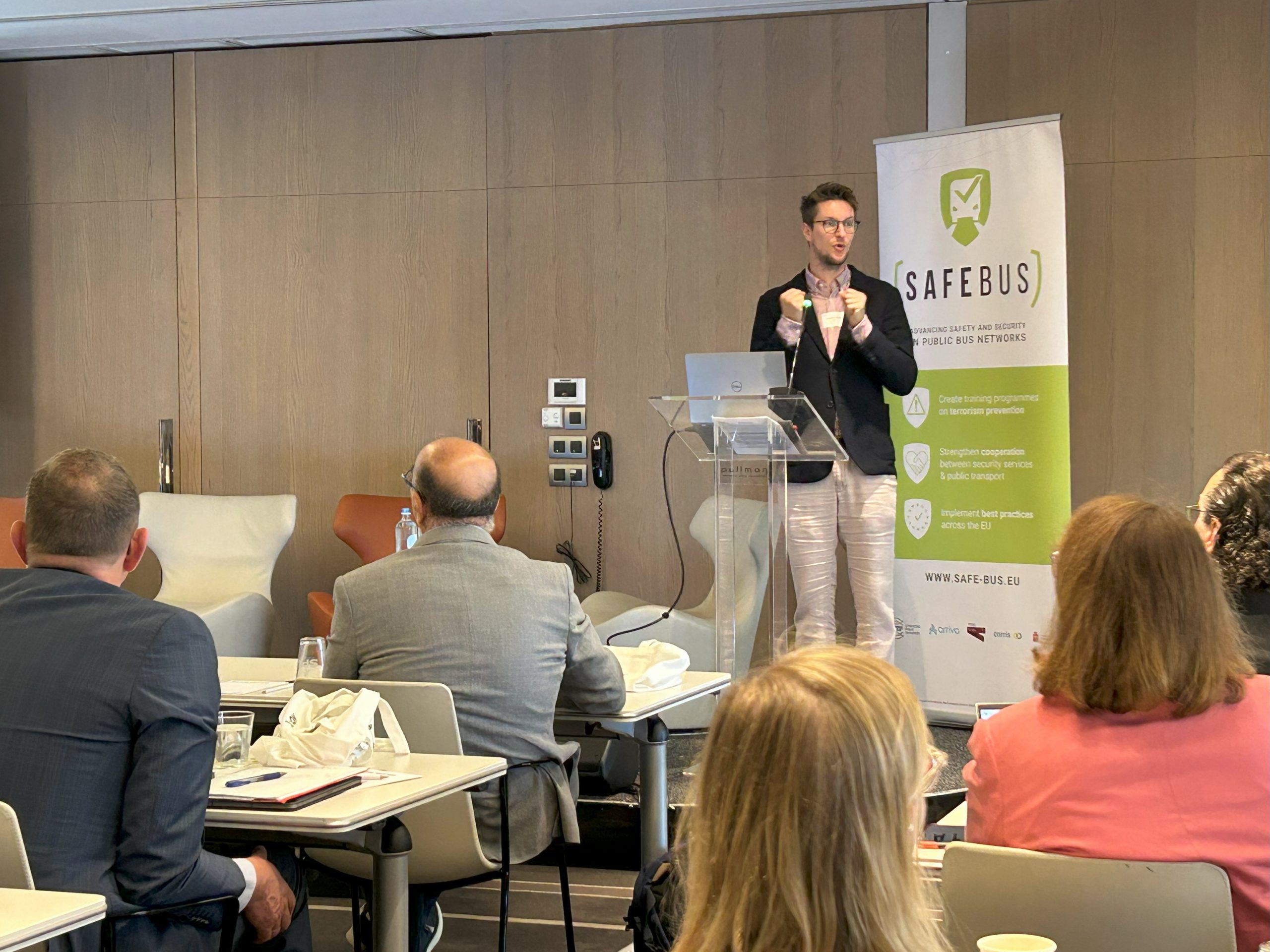
The SAFE BUS project was welcomed by PTOs, especially for those curious about access and embedding the training into their own processes because, as Ran Cohen put it, “this is how the future looks like… the [speed of developments] today is faster and faster.” Ultimately, the training aims to improve emergency prevention and readiness through behavioural analysis.
“We got a lot out of this event. It’s very motivating to come and learn what other countries are doing to tackle security.”
How SAFE BUS helps PTOs and security authorities work together
The long-term impact of SAFE BUS is clear when you ask those in public security, such as Mònica Luis, a Commissioner at the Mossos d’Esquadra in Catalonia, Spain.
She has been a part of the Mossos police service for 25 years and was previously the chief of metropolitan transport security area, an specific service within police which prevents and investigates what occurs on public transport.
“Everyone has to be involved when it comes to security. Preparedness and training is key. The goal is that everyone knows their role when something happens.”

The fact that SAFE BUS focuses on training and preparedness, in order to foster a security mindset, is why Commissioner Luis sees it having an impact. Before PTOs and security services can even begin to develop functioning, interoperable security networks, staff members need to share this mentality for security. “SAFE BUS provides tools, data awareness, and let us connect with other PTOs and PTAs that have the same issues.”
For continued success, Commissioner Luis points out the importance of regular evaluations and the sharing of information that can help organisations with different interests learn from each other. “I believe in co-operation and sharing perspectives… at the end of the day, the security of passengers is most important.”
“Everyone has a part in improving security. What SAFE BUS actions aim to do is shorten the first seconds of reaction to improve alertness and create better outcomes. The security mindset is about prevention, preparedness, and practice. These three things help you to act.”
To be sure, a successful security mindset encompasses public transport as a whole. “It’s not just about revenue or ridership numbers, it’s about the customer experience”. For example, talking about security need not panic passengers, if it is “clear, direct, short, and useful messaging”.
In addition, it is crucial to implement adequate lighting and strategically place SOS buttons and emergency exits. This is especially important for security from both a gender and accessibility perspective. There are “diverse needs” in security, which Commissioner Luis stresses must be considered.
Practice, prepare, prevent
With her expertise, Commissioner Luis mentions the handbook as an example of how SAFE BUS will help establish standards and improve security. The handbook is one part of an interoperable system to boost preparedness in emergencies, coming in two sizes, one pocket-sized A6 version for bus drivers, and a larger A4 edition for command centres.
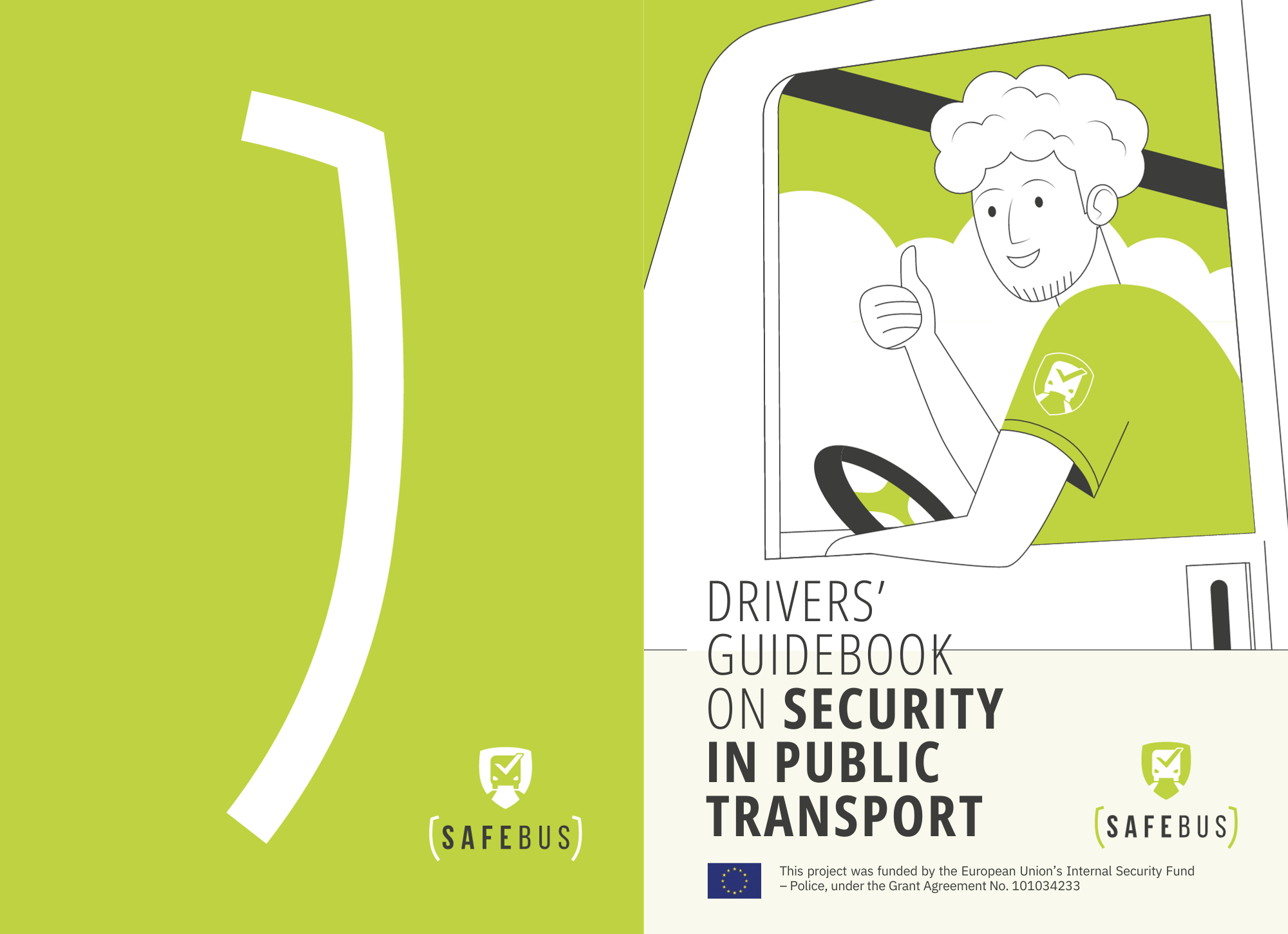
“The handbook is useful material for staff training and a good tool to consult. I would like to see its use and adaptation for railways, trams, and metro. I especially like the difference between the driver’s handbook and command officer’s handbook. It shows thoughtfulness and this will help those responsible take action.”
For Commissioner Luis, it is clear that you can only put into action what you are prepared for. “In training, you evaluate what you are ready for and what you are not.” To train staff, SAFE BUS equips operators with online blending learning tools. The reflections from training can help PTOs see where they are in relation to their targets and give the right feedback.
“When people receive feedback, whether it is positive or negative, it is satisfying and motivating and it pushes people to continue the activity.”
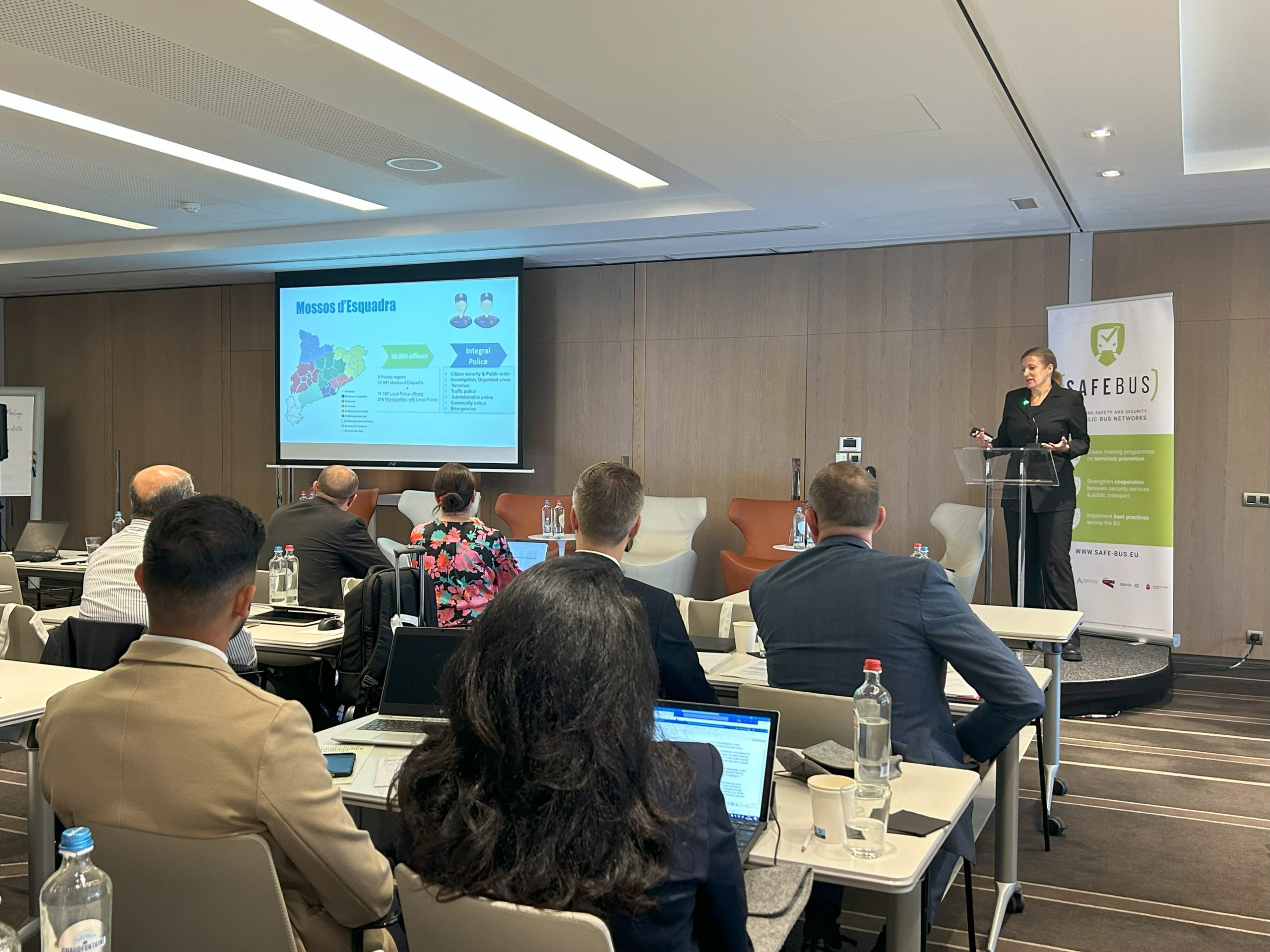
In the end, SAFE BUS is a necessary project because, as Commissioner Luis puts it, we naturally prefer to invest in “something that shines”, rather than security. This opinion was shared by Rad Olszewski, from the EU’s DG HOME counter-terrorism unit: “The problem is, when you invest in security, it’s hard to quantify a ROI. The best thing is that nothing happens”.
SAFE BUS helps establish standards and the security mindset that is required for success. It is now up to the PTOs to use the materials of the project to help foster that mentality among staff and improve security on buses across Europe.
“Something is likely to happen again. The question is where and when. We have the time to be prepared. Let’s not waste it.”


